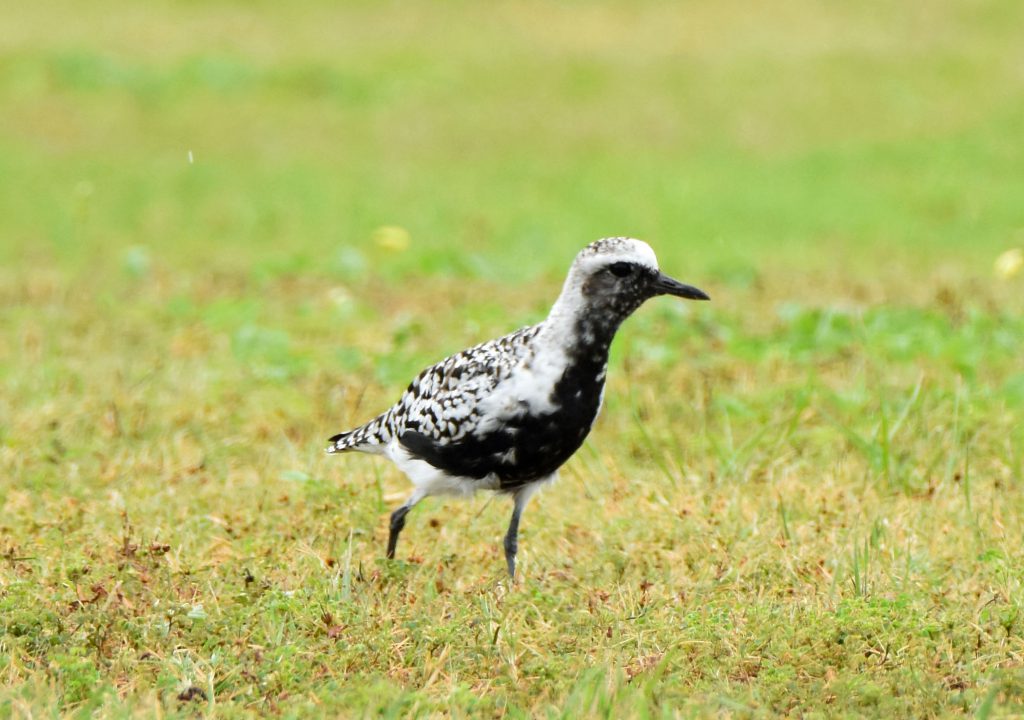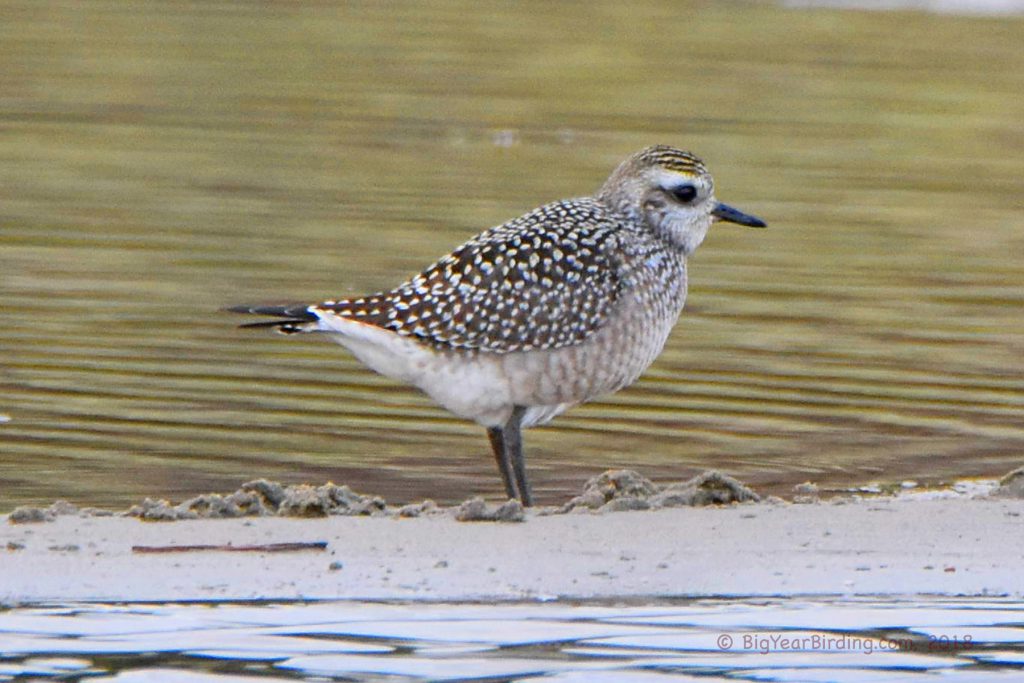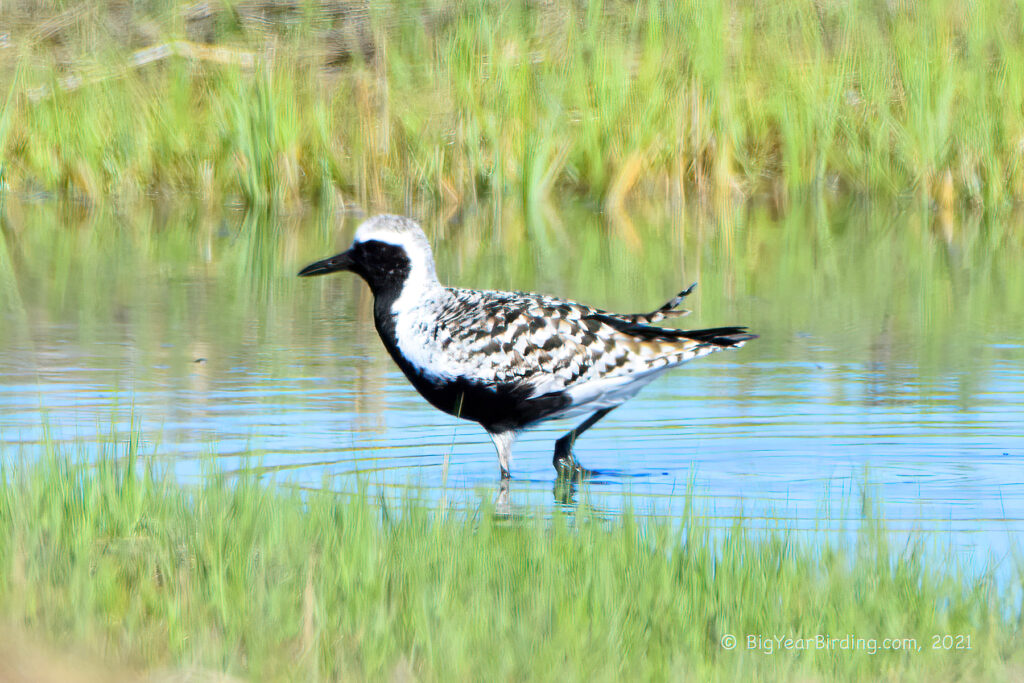
The Black-bellied Plover, also known as the Grey Plover, is a medium-sized shorebird that breeds in the high Arctic and winters along coastal areas of the Americas, Africa, and Eurasia. Adult birds are approximately 11-12 inches in length with a wingspan of 26-29 inches, and weigh between 6.5-9.5 ounces. The males and females are similar in size and coloration, with a striking black belly and face, white forehead and chest, and grey upperparts.

One of the distinguishing field marks of the Black-bellied Plover is its distinctive call, a plaintive whistle that sounds like “tuu-wee” or “klee-oo.” During breeding season, the birds also display an intricate courtship ritual, with the males performing aerial displays and vocalizations while the females observe from the ground. In winter, the birds gather in large flocks on coastal mudflats and estuaries, where they forage for crustaceans, mollusks, and marine worms.
The Black-bellied Plover is a long-distance migrant, with birds breeding in Alaska and Canada flying over 10,000 miles to wintering grounds in South America. In North America, the birds can be found along the Atlantic and Pacific coasts during migration, with some birds stopping to rest and feed at inland wetlands and agricultural fields. In South America, the birds winter along the Pacific coast from Ecuador to Chile, as well as along the Atlantic coast from Brazil to Argentina.

Conservation efforts for the Black-bellied Plover have focused on protecting important breeding and wintering habitats, as well as monitoring populations for declines. While the species is currently considered to be of least concern, habitat loss and disturbance from human activities such as oil spills and development could pose a threat to the birds in the future. Overall, the Black-bellied Plover is a fascinating and beautiful species that plays an important role in coastal ecosystems and global bird migration patterns.

